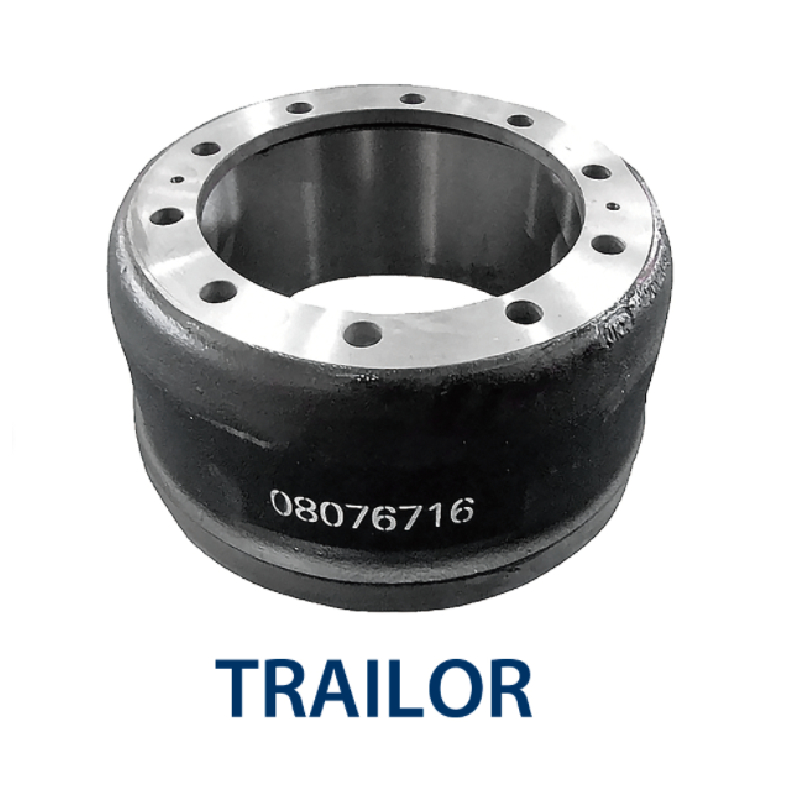Nov . 19, 2024 23:32 Back to list
brake drum setup
Brake Drum Setup A Comprehensive Guide
In the realm of automotive maintenance and repair, the brake system stands out as one of the most crucial components for ensuring vehicle safety. Among the various types of brake systems, drum brakes have been a staple in many vehicles due to their simplicity, reliability, and effectiveness. This article will delve into the intricacies of brake drum setup, including the necessary components, tools required, and the step-by-step process for a successful installation.
Understanding Brake Drums
Brake drums work on the principle of friction. They are typically made from cast iron or aluminum and are mounted on the wheel hub. When the brake pedal is pressed, brake shoes inside the drum expand outward, pressing against the inner surface of the drum to slow down or stop the vehicle. This system is especially effective in delivering strong stopping power, particularly in heavier vehicles.
Components of a Drum Brake System
Before delving into the setup process, it is vital to familiarize oneself with the primary components of a drum brake system. These include
1. Brake Drum The circular component that rotates with the wheel. 2. Brake Shoes Curved components that press against the drum to create friction. 3. Wheel Cylinder A hydraulic component that operates the brake shoes. 4. Return Springs Springs that retract the brake shoes when the brake pedal is released. 5. Adjusters Mechanisms that ensure the correct distance between the shoes and the drum, compensating for wear over time.
Tools Required
A successful brake drum setup requires the right tools. Here is a list of essentials
- Jack and jack stands - Lug wrench - Brake drum puller (if necessary) - Wrenches and sockets - Screwdrivers - Brake cleaner - Wheel chocks - Torque wrench - Protective gloves and goggles
Step-by-Step Brake Drum Setup
1. Preparation Start by ensuring the vehicle is parked on a flat surface. Engage the parking brake and place wheel chocks behind the wheels to prevent any movement.
2. Jack Up the Vehicle Use the jack to lift the vehicle safely off the ground. Secure it with jack stands to ensure stability during the process.
brake drum setup

3. Remove the Wheel Using a lug wrench, remove the lug nuts and take off the wheel to expose the brake drum.
4. Inspect the Brake Components Before proceeding, inspect the brake shoes, springs, and the drum for any signs of wear or damage. Replace any components if necessary.
5. Remove the Brake Drum If the drum does not slide off easily, a brake drum puller may be needed to safely detach it without causing damage.
6. Install New Brake Shoes (if applicable) If you are replacing the brake shoes, remove the old shoes and install the new ones. Ensure that the shoes are oriented correctly and that the adjusters are set to the recommended specifications.
7. Clean the Drum Before reassembly, clean the inside of the brake drum with brake cleaner to remove any dust or debris that may interfere with braking performance.
8. Reattach the Drum Slide the cleaned or new brake drum back onto the hub. Ensure it is seated properly without any obstruction.
9. Adjust the Brake Shoes Use the adjusters to ensure that the shoes are properly positioned near the drum. They should not rub against the drum unless the brake is engaged.
10. Reinstall the Wheel Place the wheel back onto the hub and secure it with the lug nuts. Tighten the nuts in a star pattern, ensuring even application of pressure.
11. Lower the Vehicle Carefully lower the vehicle back onto the ground and remove the jack stands.
12. Test the Brakes Before taking the vehicle out on the road, pump the brake pedal to ensure proper engagement. This will also help adjust the brake shoes if necessary.
Conclusion
Setting up brake drums can be a rewarding automotive task, provided it's done with attention to detail and safety precautions. By following the above steps, car enthusiasts and DIY mechanics can ensure their drum brakes remain in optimal condition, enhancing vehicle safety and performance. Regular maintenance and timely replacement of components can lead to a smoother driving experience, ultimately keeping the road safer for everyone.
-
IVEKO High-Performance Brake Drums Durable & Precision-Engineered
NewsMay.17,2025
-
Brake Drum Man High-Quality Drum Brake & Shoe Solutions
NewsMay.17,2025
-
Brake Drum Man Premium Drum Brake & Shoe Solutions OEM-Compliant
NewsMay.16,2025
-
Brake Drum Man High-Quality Drum Brake & Shoe Kits for Vehicles
NewsMay.16,2025
-
Brake Drum Man High-Quality Drum Brake Parts & Expert Solutions
NewsMay.16,2025
-
Brake Drum Man High-Quality Drum Brake & Shoe Solutions
NewsMay.15,2025
